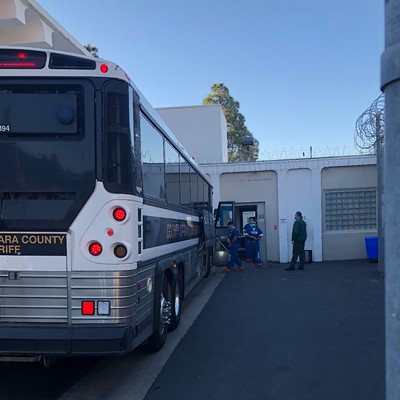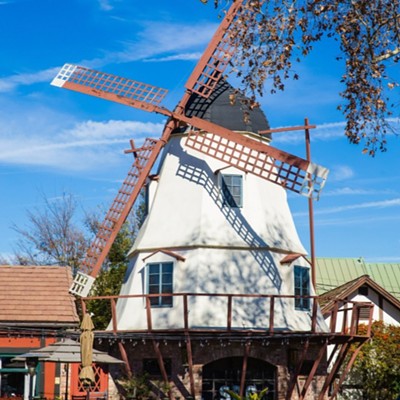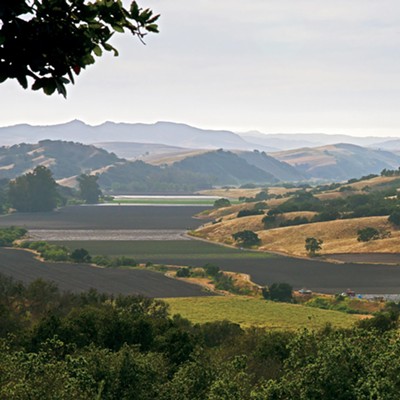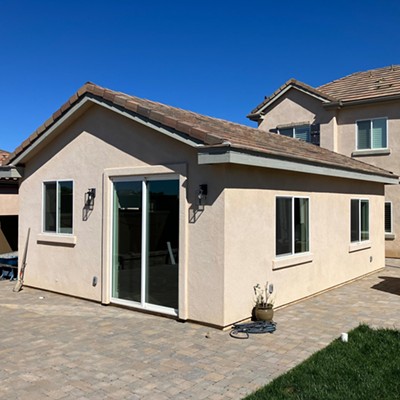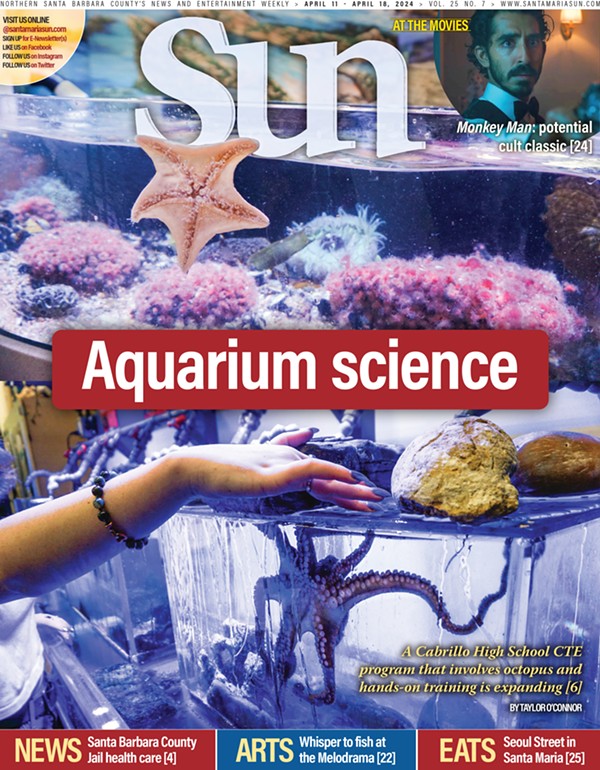Yes, it’s green. No, you can’t smoke it.
California’s first home made from industrial hemp materials could be coming to Santa Barbara County, if the owner of Knapp’s Castle can navigate his way through a labyrinth of red tape.
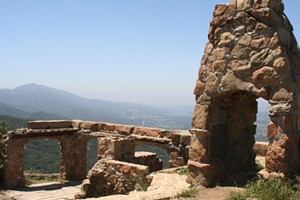
Sitting off Highway 154 in the Santa Ynez Mountains, Knapp’s Castle is the remnants of a mansion built by George Knapp, the founder of Union Carbide, in 1916. In 1940, the home sold to Frances Holden, and it subsequently burned down in a forest fire. Today, only the mansion’s sandstone foundation, chimney pillars, and a few arched walls remain. A short hike from East Camino Cielo Road, the site is a popular destination for hikers and photographers, offering a panoramic view of Cachuma Lake and the Santa Ynez Valley.
Colorado-based Castillo Cielo Holding Company bought the land in 2004, and partner Calvin Smith has had his sights on building the most energy efficient house he could find on the site. His research eventually took him to building products made from industrial hemp.
“We were always going to build some sort of green building there,” Smith explained. “It’s just evolved into hemp seeming to be the most earth-friendly form that we could do, as far as insulation qualities and strength and fire retardant abilities. So that’s what we would like to build.”
Unfortunately, Smith said, the idea has taken years—and a lot more headaches—than he ever anticipated. The delay comes partly from the materials involved, and partly as a result of the “heavy bureaucracy” he said he’s faced in the county’s planning and building departments.
“It’s just been ridiculous,” Smith said. “You’d think when you’re trying to do something that’s good for the environment and show people possibly a better way to live, that they would try and help you out instead of putting up more roadblocks.”
With a background in saving historic structures, Smith originally wanted to restore Knapp’s mansion to its former glory, but decided the ruins should be preserved as is. He came up with the design for a guest home nearby and sought out Hemp Technologies, a North Carolina company specializing in construction of low-energy, carbon-neutral homes using materials made from industrial hemp.
The company built the first hemp-based home in the United States in 2010 in Asheville, N.C., and has built several others in that state, as well as in Canada and Australia. More are planned in Texas, Hawaii, Idaho, New Zealand, and the Netherlands. If approved, Knapp’s Castle would be the site of the first home made of hemp products in California.
Hemp Technology’s website describes the planned guest house as an “Aspen Cabin” design—600 square feet with a 300-square-foot loft—incorporating walls encased in a material called “Hempcrete.”
The company describes Hempcrete as a mixture of industrial hemp and a lime-based binder, which protects the hemp from mold. The resulting product, the company says, is an airtight and concrete-like material that, when combined with lime, creates a “breathable wall,” which changes in response to humidity levels. Additionally, the company says, the material is long lasting, durable, and recyclable. Besides Hempcrete, the company also offers hemp-based drywall, thermal insulation, fiberboard, and earthen building blocks.
Industrial hemp, which uses fibers from the non-psychoactive strains of the cannabis plant, is still illegal to grow in the United States, though it can be imported and is used in variety of products, from clothes and paper to lotion and milk.
According to Santa Barbara County building official Massoud Abolhoda, there’s nothing in the state’s building code recognizing hemp as a valid building material. However, if the project ever gets through the planning stage, developers would be able to present their case for it through the “alternative method and materials of construction” process.
“We would look at their data, test results, and engineering reports,” Abolhoda explained. “Then we would make a determination on whether they would provide a certain level of durability and safety, and that they’re comparable to the materials that are allowed to be used for construction under the code.”
Santa Barbara County Planning Department officials said they’ve long been aware of Smith’s intention to use hemp-based materials, but the structural design would have to make its way through the planning process before the components would even be addressed by the county’s building division.
According to county planning supervisor Petra Leyva, the department currently has a land-use review in progress for “accessory structures” at the site, but no formal submissions for a single family home.
Smith has tried to build on the Knapp’s Castle property before. In 2010, he began adding stone steps and reinforcing some of the structures. Smith said he’d been sent to Santa Maria and had gotten permission from the county for the project, but was later informed the approval didn’t come from the right office. Last January, the county ordered construction halted and fined Smith for a lack of permits.
Today, construction equipment and materials remain amid the ruins. Hikers are still allowed to visit; however, a sign posted on the main gate warns that access is revocable by owner, while another notifies visitors the site is under 24-hour video surveillance.
Over the years, Smith said it’s been a balancing act to keep the site open to the public, while at the same time curbing the frequent vandalism; visitors have torn chimneys down with crowbars and sprayed graffiti.
“When I first bought it, I didn’t know how popular it was, but I thought it was important to keep it open as much as possible,” he explained. “I’m still trying to figure out how to keep it open for the good people to enjoy, and keep out the ones that want to destroy it.”
Smith said he recently finished soil tests and surveys for his project and hopes to get the building approved within the next year. During construction, he intends to invite people to the site to see it firsthand. Once the home is completed, Smith said he’d like to rent it out to someone who could harvest the wild plants that grow on the mountain. He envisions someday opening a teahouse there, where hikers could sip native brews.
Primarily, though, he wants the project to send a message: You can build green, carbon-neutral homes without the use of plastics and petroleum products.
“We want to make it as earth friendly as possible,” Smith said. “We have the opportunity to teach so many people about a better way to live. What better thing can you do?”
Contact Staff Writer Jeremy Thomas at jthomas@santamariasun.



